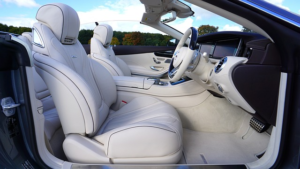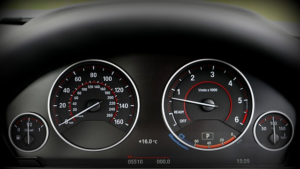What Big Tech’s vision of transportation gets horribly wrong – Fast Company
Promises of technofuturistic driving utopias, depicted vividly and with claims of credibility, have been ubiquitous for the last 80 years. They assure us of a future in which traffic congestion never slows vehicles down, and cars never collide with anything.
But these promises become reasons not to commit too much money or attention to modes of transportation that are already safer today,…….
Promises of technofuturistic driving utopias, depicted vividly and with claims of credibility, have been ubiquitous for the last 80 years. They assure us of a future in which traffic congestion never slows vehicles down, and cars never collide with anything.
But these promises become reasons not to commit too much money or attention to modes of transportation that are already safer today, and that are also spatially efficient, more sustainable, and much cheaper.
By promising perfection, the promoters of technofuturistic visions make ordinary sufficiency bland by comparison. According to the author of a blurb on the back of a 2018 book celebrating “our driverless future”: “This book should be required reading for every city planner and for every taxpayer fed-up with wasted transit dollars.” It’s an extraordinary statement, considering the public money that has been spent for decades in the pursuit of highly automated driving that still offers little besides some convenience benefits to some drivers—but it’s not an unusual position.
[Cover Image: Island Press]
Though diverse, the visions of high-tech driving share a common claim: with sensor data, state-of-the-art hardware, machine learning, and digital networking, onboard computers in every car will drive for us, better than we can, and sooner than we think. Despite the extraordinary technological developments of the last 20 years, however, the practical possibility of widespread automatic driving remains elusive. High-tech “solutions,” always just over the horizon, are supposed to offer the anticipated deliverance. The lack, however, lies not in technology but in the aspiration itself. Meanwhile, the supposed solutions, in promising an eventual end to all our afflictions, divert us from transport sufficiency: an unspectacular state in which everyone can meet their practical needs.
The governing assumption is that a car-dependent future city that is efficient, safe, sustainable, and equitable is practically possible, or desirable enough to be pursued at any cost, to the neglect of less utopian but more feasible alternatives. When pressed, promoters of such futures point out the obvious deficiencies of the status quo, as if the universe of our choices is limited to just two possibilities: status quo car dependency or futuristic car dependency. We may hear that people prefer to drive. But in settings that offer no good alternatives to driving, we can’t say what people prefer. More often, however, we hear that the technology, like the weather, “is coming”; for those of us not developing and selling it, our task is only to forecast and prepare for the inevitable.
Perhaps the greatest threat of AVs is that they take car dependency as a given. Since car dependency is a fact of life (the implicit reasoning runs), how do we make it safer, more sustainable, and more efficient? Such a framing makes no more sense than treating cigarette smoking as a constant. Car dependency is no more a given than cigarette addiction. Indeed, the news is better for cars. In the case of cigarette addiction, quitting entirely was the only remedy. But we do not have to totally abandon cars.
Cars, even conventional cars, can be one of many useful devices in a diverse variety of mobility tools. The threat is car dependency, where there are no good choices, where even the poor must drive or ride in cars, and where the urban form reshapes itself around cars so completely that nothing else works.
Above all, AVs are no solution to mobility problems. Car dependency is consumerism’s greatest triumph; promoters of automated driving are less interested in human mobility than in preserving car dependency. AVs may be useful minor supplements to diversified mobility systems. But much as filtered and “low tar” cigarettes were a dangerous detour that extended cigarette smoking for decades, AVs are a dangerous distraction from the means we already have before us to secure more sustainable, less expensive, more healthful, and more equitable urban mobility.
Real urban mobility innovation will require not autonomous vehicles but autonomous people: travelers with choices. This in turn will necessitate reinventing or rediscovering innovation. A complete innovation palette will include high tech, zero tech, and everything between. Such full-spectrum innovation will take advantage of the intelligence of the humans in the mobility system instead of striving to engineer it out. It will learn from history instead of disdaining it. It is time to try it seriously. When we rescue innovation from the technofuturists and recover the tools they excluded, we will find that, with full-spectrum innovation, we can do more today, at far less cost, than what they promise to deliver at unlimited expense at an ever-receding future date.
It’s become a cliché: Like it or not, autonomous vehicles are coming, and sooner than you think. What we want is unimportant, because technology drives history, and technology, we are told, has chosen autonomous vehicles. Satisfying needs has never been the point.
We must reject the situation as it has been framed for us, and frame it for ourselves. It will help us to use the right tool for the job if we stop subsidizing the wrong tool so lavishly. Though public transportation is frequently condemned as a prodigal waster of public subsidies, it cannot begin to compete for this title with automobility. Even in congested areas, drivers seldom pay for the expensive road capacity they use. Their gasoline taxes cover only a fraction of the expense, and the payment is disconnected from the value of the road capacity used. “Highways do not—and except for brief periods in our nation’s history—never have paid for themselves through the taxes that highway advocates call ‘user fees,’ ” the Public Interest Research Group has reported.
Let’s ask what future we want and need, and then talk about the technology we need to get it. We err when we frame our task as adapting to new technology. We do better when we adapt tech to our purposes. If we can agree that our mobility purposes include, in debatable proportions, sustainability, affordability, efficiency, inclusivity, equity, and health, we can at last take best advantage of what technology has to offer us.
From Autonorama by Peter Norton. Copyright © 2021 Peter Norton. Reproduced by permission of Island Press, Washington, D.C.
Source: https://www.fastcompany.com/90692105/what-big-techs-vision-of-transportation-gets-horribly-wrong






